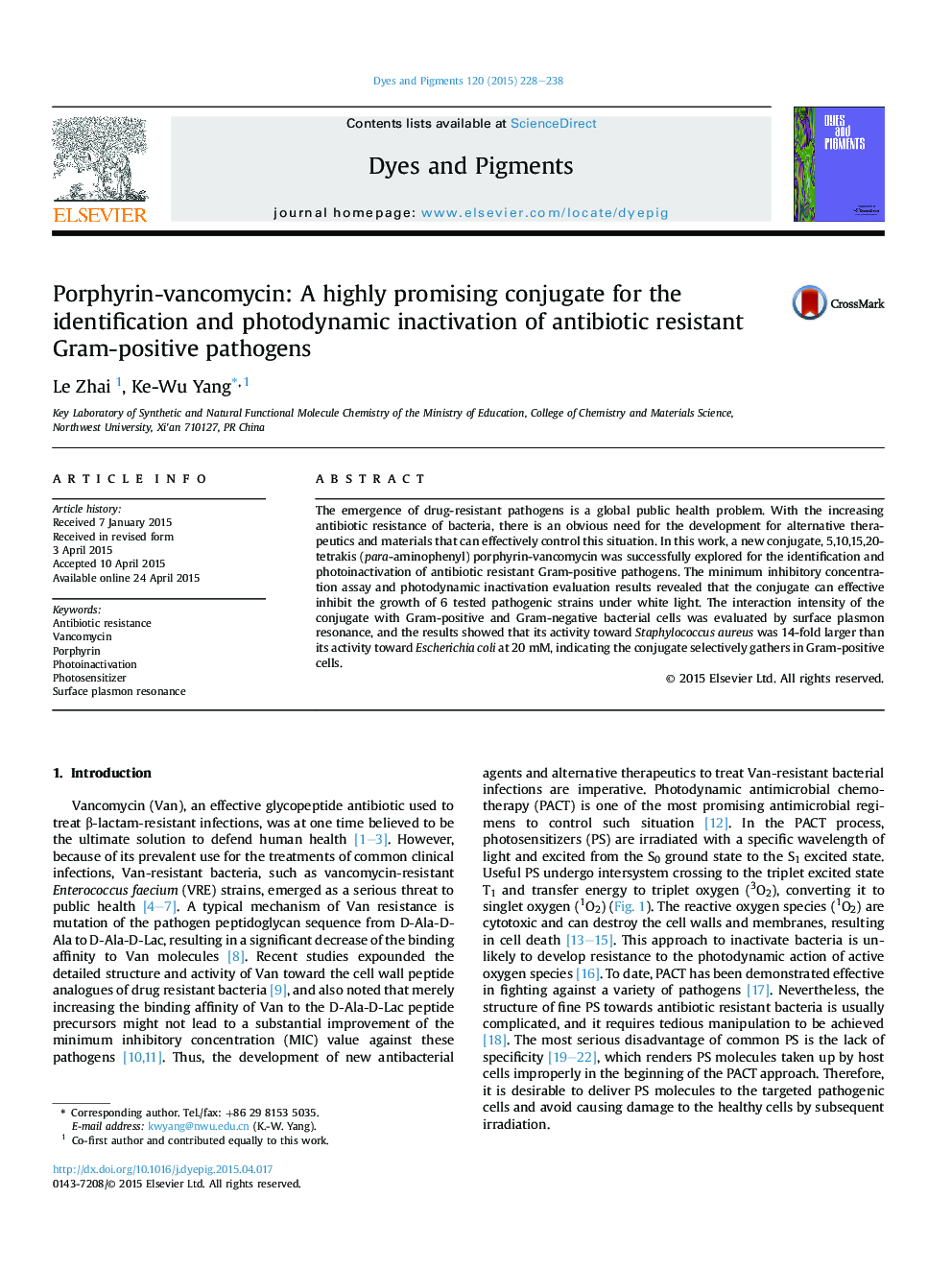| Article ID | Journal | Published Year | Pages | File Type |
|---|---|---|---|---|
| 175767 | Dyes and Pigments | 2015 | 11 Pages |
•A new porphyrin-vancomycin conjugate was constructed and characterized.•With the conjugate the photosensitizer was delivered to the targeted pathogenic cells.•The conjugate exhibited specific photoinactivation to Gram-positive resistant bacteria.•SPR was first used for binding affinity assay of photosensitizer with resistant cells.•This work affords a scaffold for photoinactivation of Gram-positive resistant bacteria.
The emergence of drug-resistant pathogens is a global public health problem. With the increasing antibiotic resistance of bacteria, there is an obvious need for the development for alternative therapeutics and materials that can effectively control this situation. In this work, a new conjugate, 5,10,15,20-tetrakis (para-aminophenyl) porphyrin-vancomycin was successfully explored for the identification and photoinactivation of antibiotic resistant Gram-positive pathogens. The minimum inhibitory concentration assay and photodynamic inactivation evaluation results revealed that the conjugate can effective inhibit the growth of 6 tested pathogenic strains under white light. The interaction intensity of the conjugate with Gram-positive and Gram-negative bacterial cells was evaluated by surface plasmon resonance, and the results showed that its activity toward Staphylococcus aureus was 14-fold larger than its activity toward Escherichia coli at 20 mM, indicating the conjugate selectively gathers in Gram-positive cells.
Graphical abstractFigure optionsDownload full-size imageDownload as PowerPoint slide
